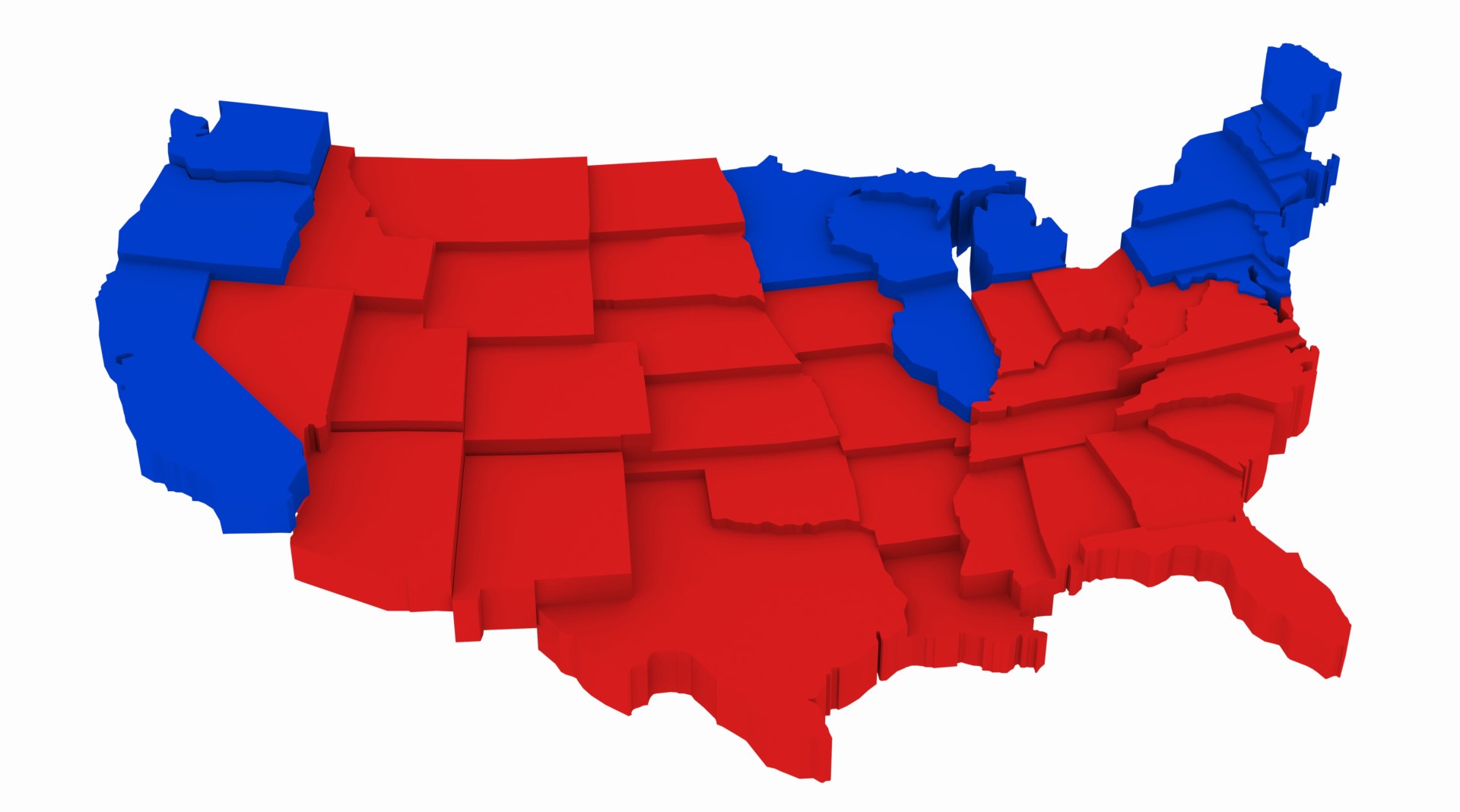
Going into the 2016 presidential election, virtually all political pundits and pollsters projected an easy victory for Hillary Clinton. Several of the most respected pollsters gave Clinton an 85 percent chance of defeating Donald Trump. Highly respected presidential scholar Larry Sabato projected that Clinton would win 347 electoral votes to Trump’s 191.
As we now know, Trump won 290 electoral votes to 232 for Clinton with Michigan’s 16 electoral votes still undecided. Although Trump won the electoral majority and the presidency, Clinton is leading by over 2 million popular votes.
This marks the fourth time in presidential history where the candidate winning the popular vote lost the electoral vote battle. Andrew Jackson lost to John Quincy Adams in 1824, Samuel Tilden lost to Rutherford B. Hayes in 1876, Al Gore lost to George W. Bush in 2000, and now Clinton has lost to Trump. All four of those who won the popular vote but lost the election were Democrats.
Movements are underway to pressure electors to vote for the popular vote winner. Lady Gaga’s petition requiring this to happen in 2016 has already garnered 5 million signatures.
Movements are also seeking to abolish the Electoral College and replace it with the direct election of the president. Both movements are likely to fail.
Supporters of direct election do have the support of a majority of the American public. Their strongest argument is simply that direct election is the most democratic way to select the president. It also is the reason that the drafters of the Constitution opposed direct elections.
Those who drafted the Constitution created a republic and not a democracy. Alexander Hamilton believed the masses could not be trusted since “they seldom judge or determine right.” Hamilton urged the “first class” to “check the unsteadiness of the second.”
James Madison, one of the co-authors of The Federalist Papers written to secure passage of the Constitution, wrote that unfettered masses tend to “tyranny.”
John Adams, a signer of the Declaration of Independence and the nation’s second president, noted that “Democracy never lasts long. It soon wastes, exhausts, and murders itself. There never was a democracy that did not commit suicide.”
Supporters of direction elections argue it is only fair that the popular vote winner is elected as president and not the electoral vote winner. But, if the direct election was used, the candidates would alter their campaign strategy.
Contrary to popular opinion, there is no guarantee that Jackson, Tilden, Gore or Clinton would have won under a popular vote system, because their opponents would have altered their campaign strategy. Republicans would focus more on blue-state Republicans and Democrats would concentrate more on red-state liberals.
Trump, in response to critics who said Clinton should win because she won the popular vote battle, tweeted that “If the election were based on total popular vote, I would have campaigned in New York, Florida, and California and won even bigger and more easily.”
Those who want to alter the Electoral College system face several significant hurdles. The system was designed not only as a check on the masses but also to, protect the small states from the domination of the large states.
If no candidates receive a majority of the electoral vote, the election is thrown into the House where every state gets one vote in selecting the president. California gets one vote as does Alaska. After 230 years, can we amend the Constitution and violate an agreement that was essential to the passage of the Constitution?
Amending the Constitution to replace the Electoral College system with direct election is unlikely to happen. Amendments require a two-thirds vote in both the House and Senate and the approval of three-fourths of the state legislatures. This is unlikely since the small states would be undercutting one of their political powers.
As opponents of the electoral college point out, it is not necessary to amend the Constitution if states enter into a compact requiring their state’s electors to vote for the national popular vote winner. The position of elector would be retained, but they would be required to vote for the popular vote winner.
The compact plan, is advocated by computer scientist John Koza, whose 800-page book, Every Vote Equal, can be downloaded for free. Koza’s plan would only kick in when enough states sign the compact and equal 270 or more electoral votes.
So far, 10 states and the District of Columbia, have signed the compact. The 10 states that have signed on are Hawaii, Illinois, Maryland, Massachusetts, New Jersey, Washington, Vermont, California, and Rhode Island. These states represent 165 electoral votes.
Notice anything about the states signing the compact? Every one is a blue state. Not one red state has signed on and the key battleground states like Florida and Ohio, which receive disproportionate attention under the current system, are not likely to sign the compact.
Even if enough states sign the compact, there is little doubt it would face a constitutional challenge. The Compact Clause of the Constitution states that “no state shall, without the consent of Congress, enter into any agreement or compact with another state, it with a foreign power.”
Tara Ross, the author of Enlightened Democracy, wrote that “If ever a compact encroached on federal and state sovereignty, this is it. The compact would change the presidential selection process without amending the Constitution.”
If you want to make a safe bet, look for the Electoral College to be here for another 200 years. Then again, we thought it was a safe bet that Clinton would beat Trump.
___
Darryl Paulson is Professor Emeritus of Government at the University of South Florida in St. Petersburg.



